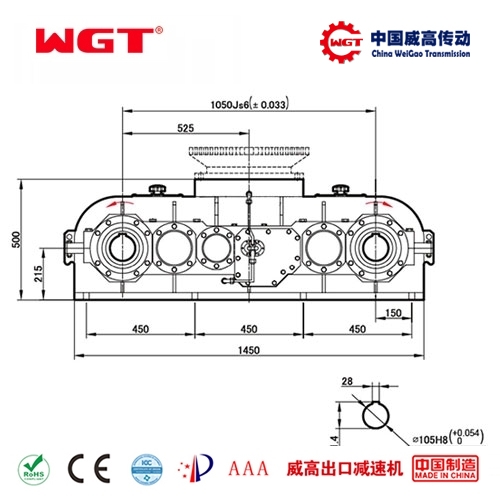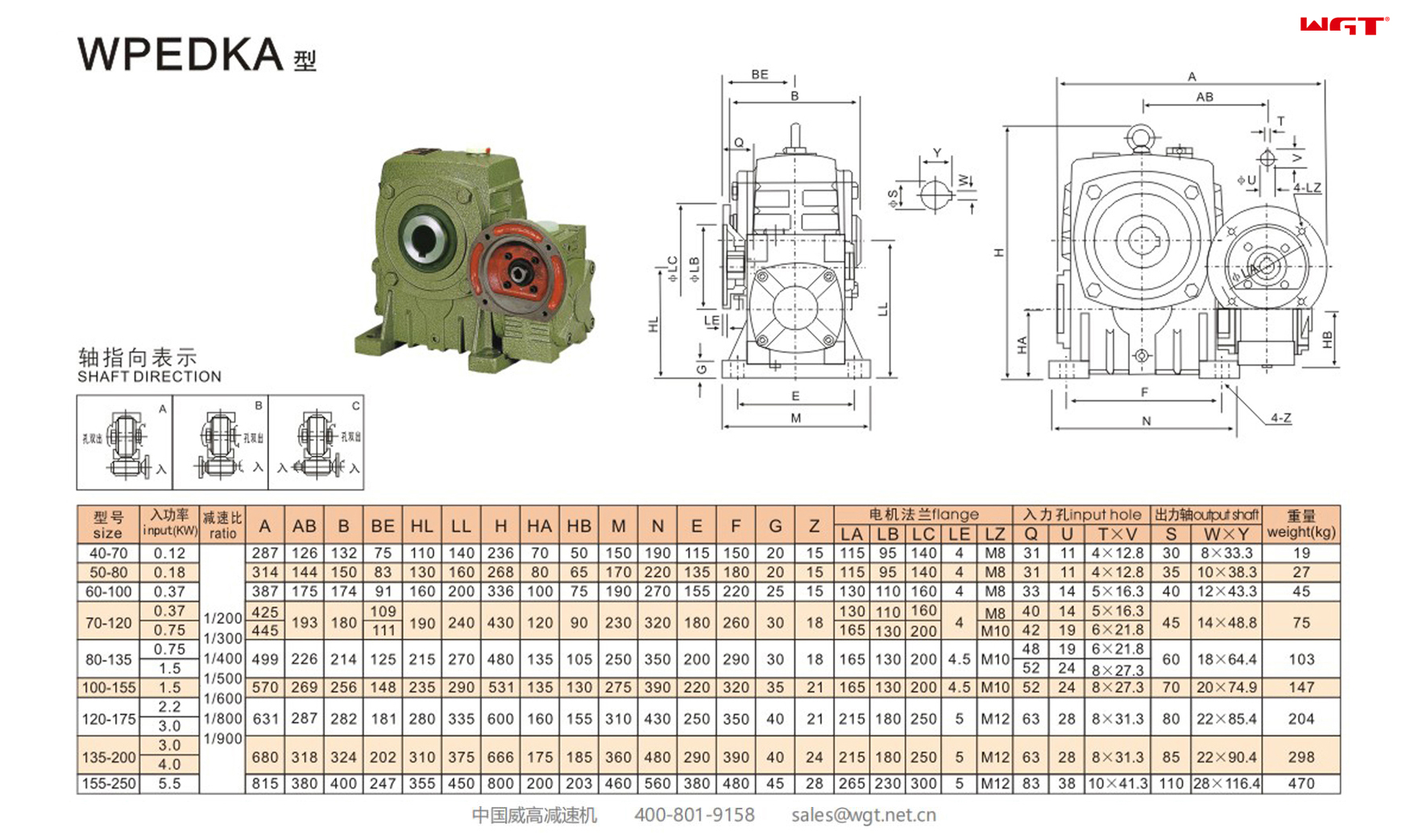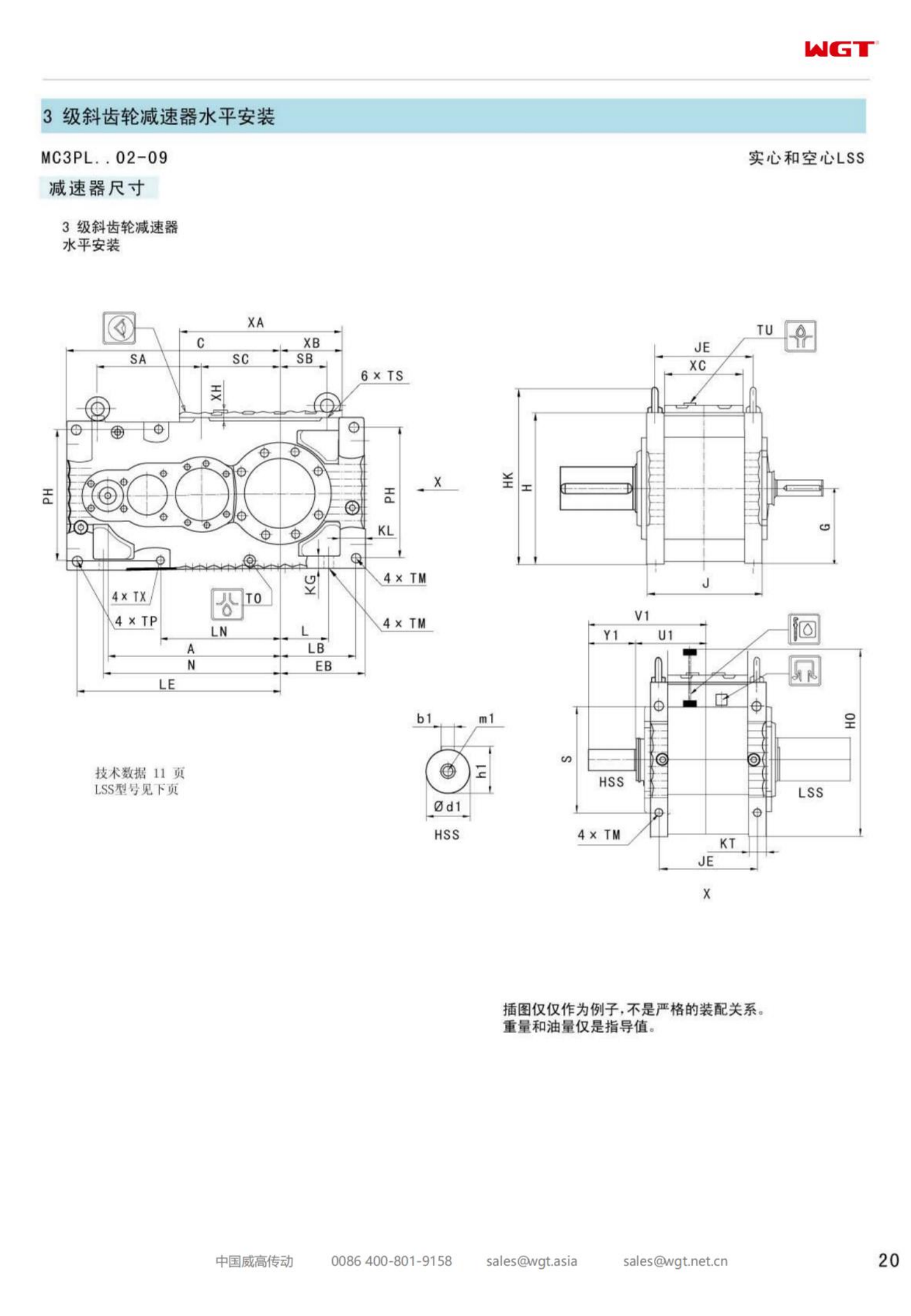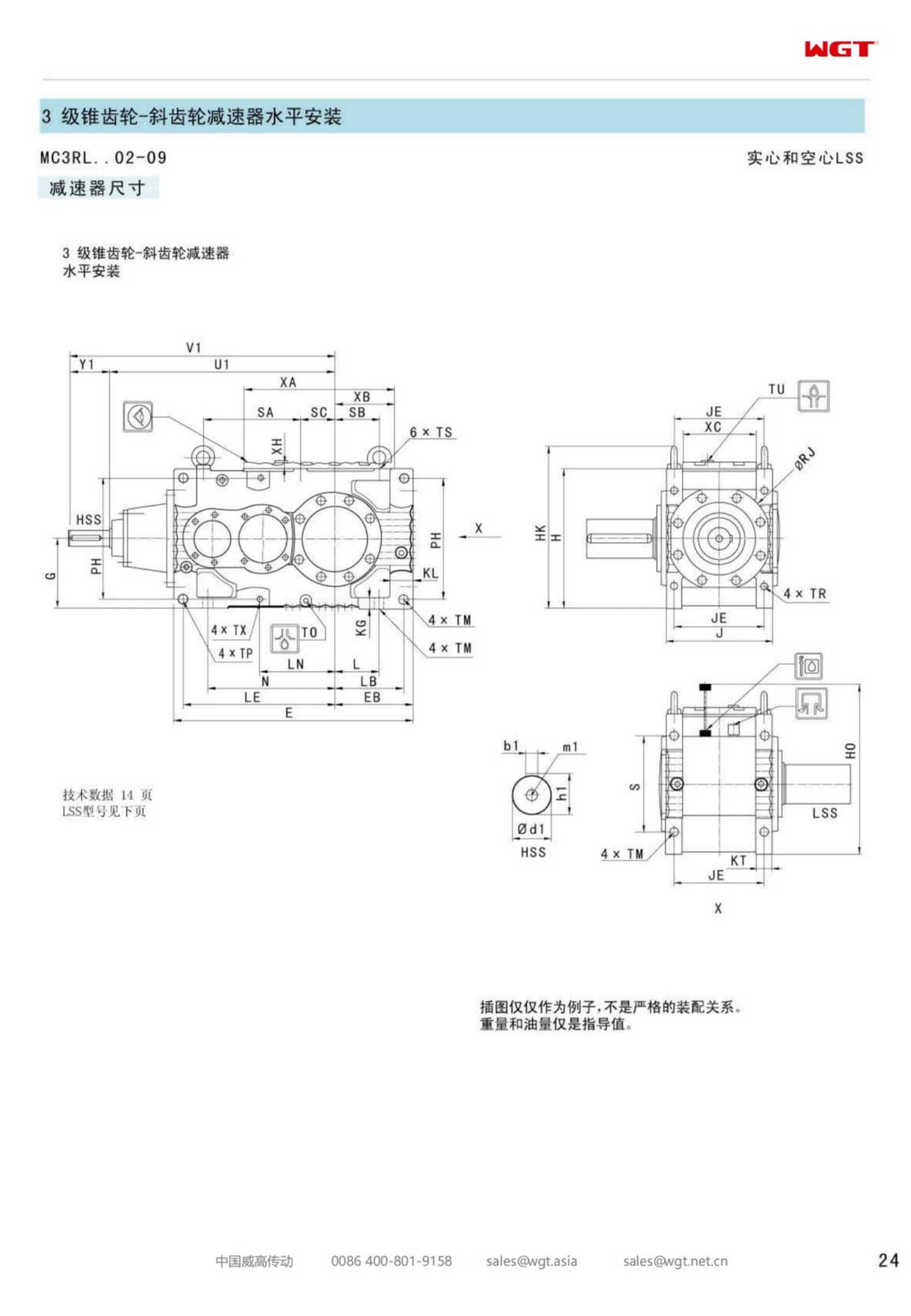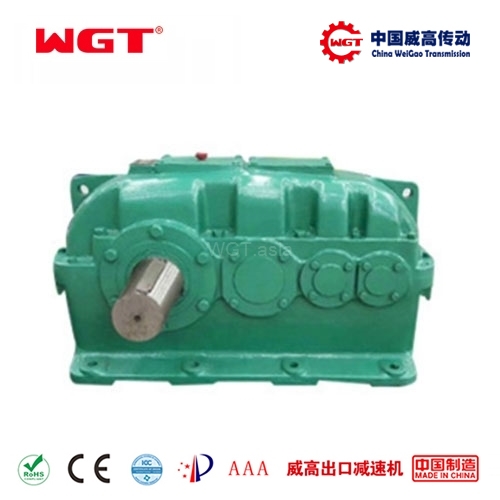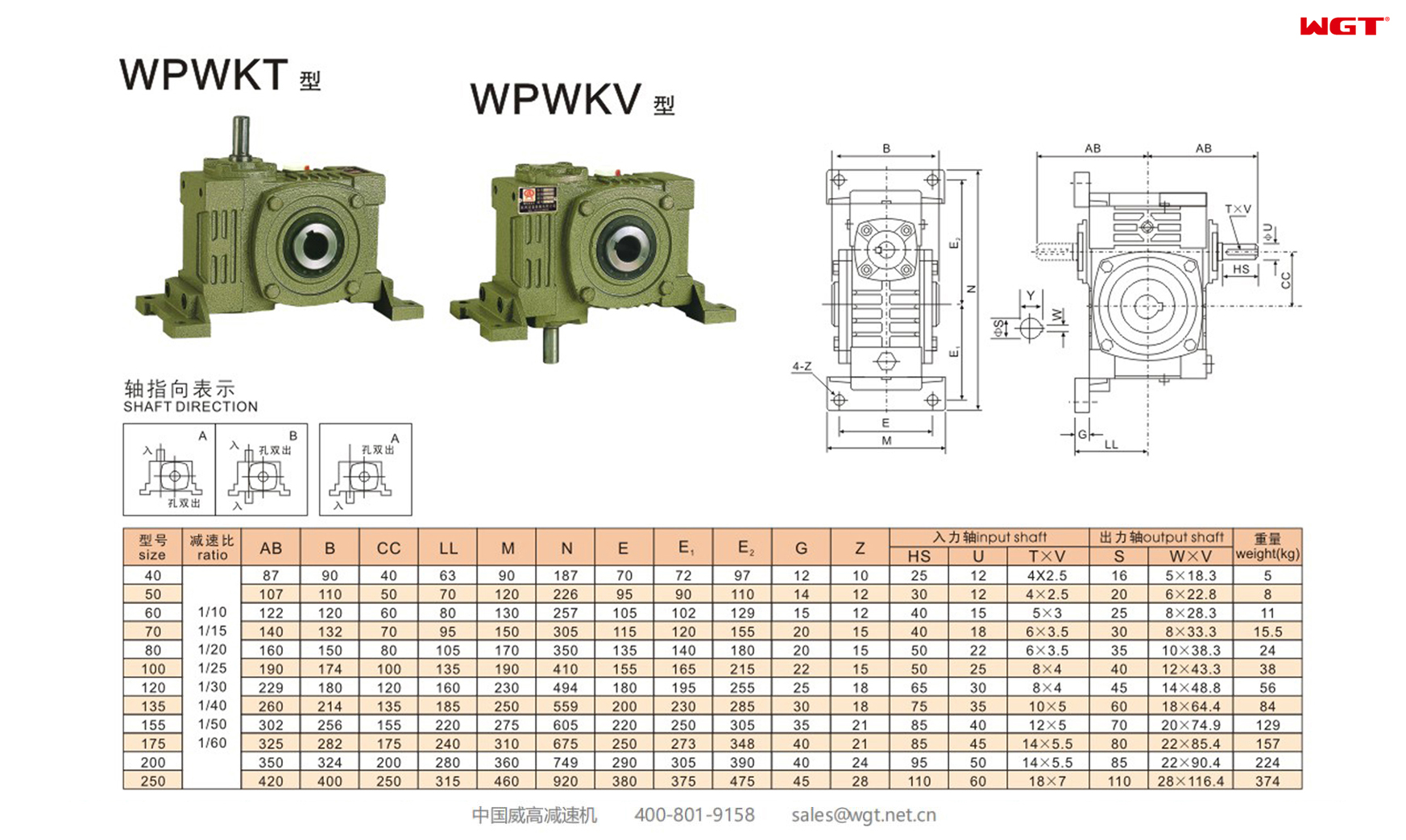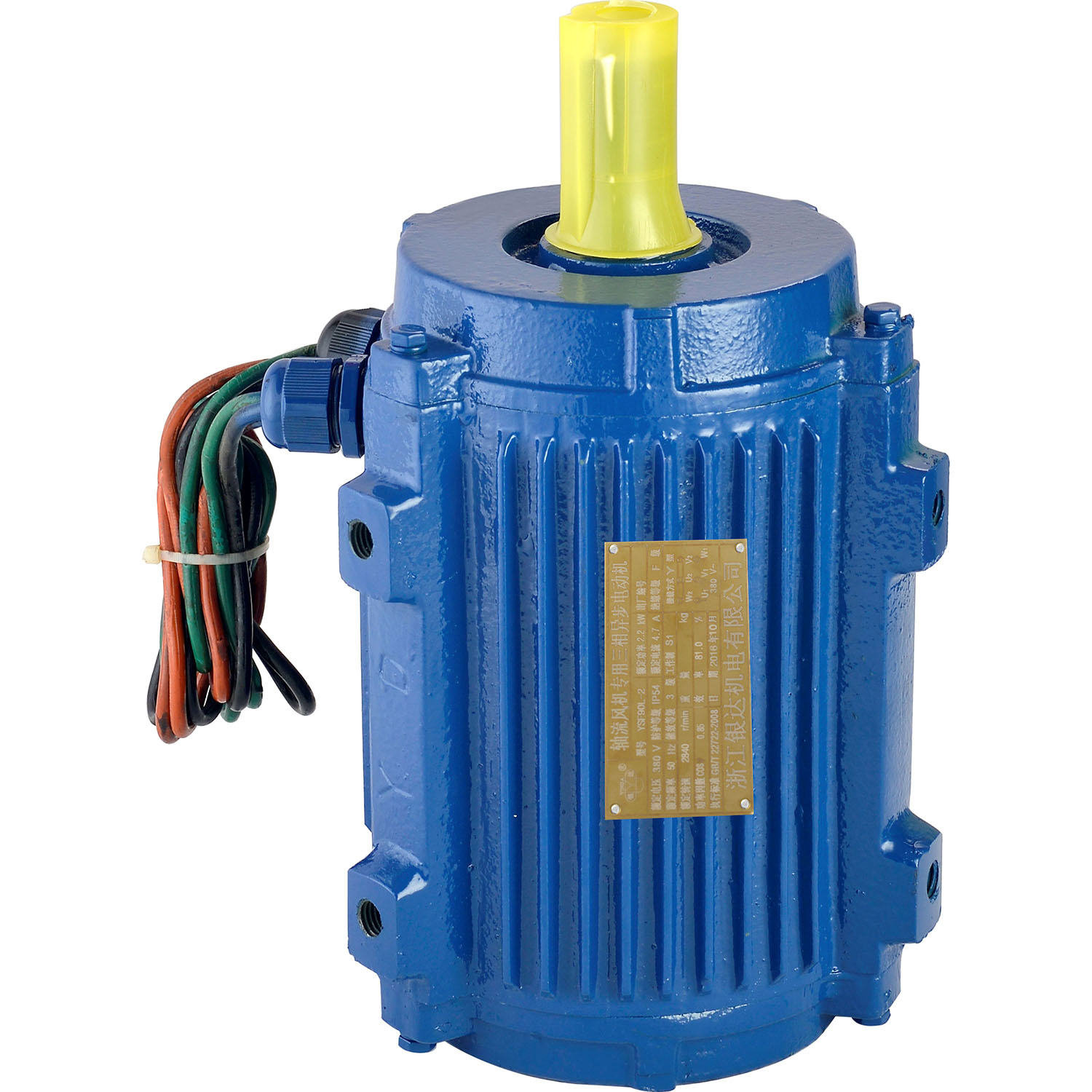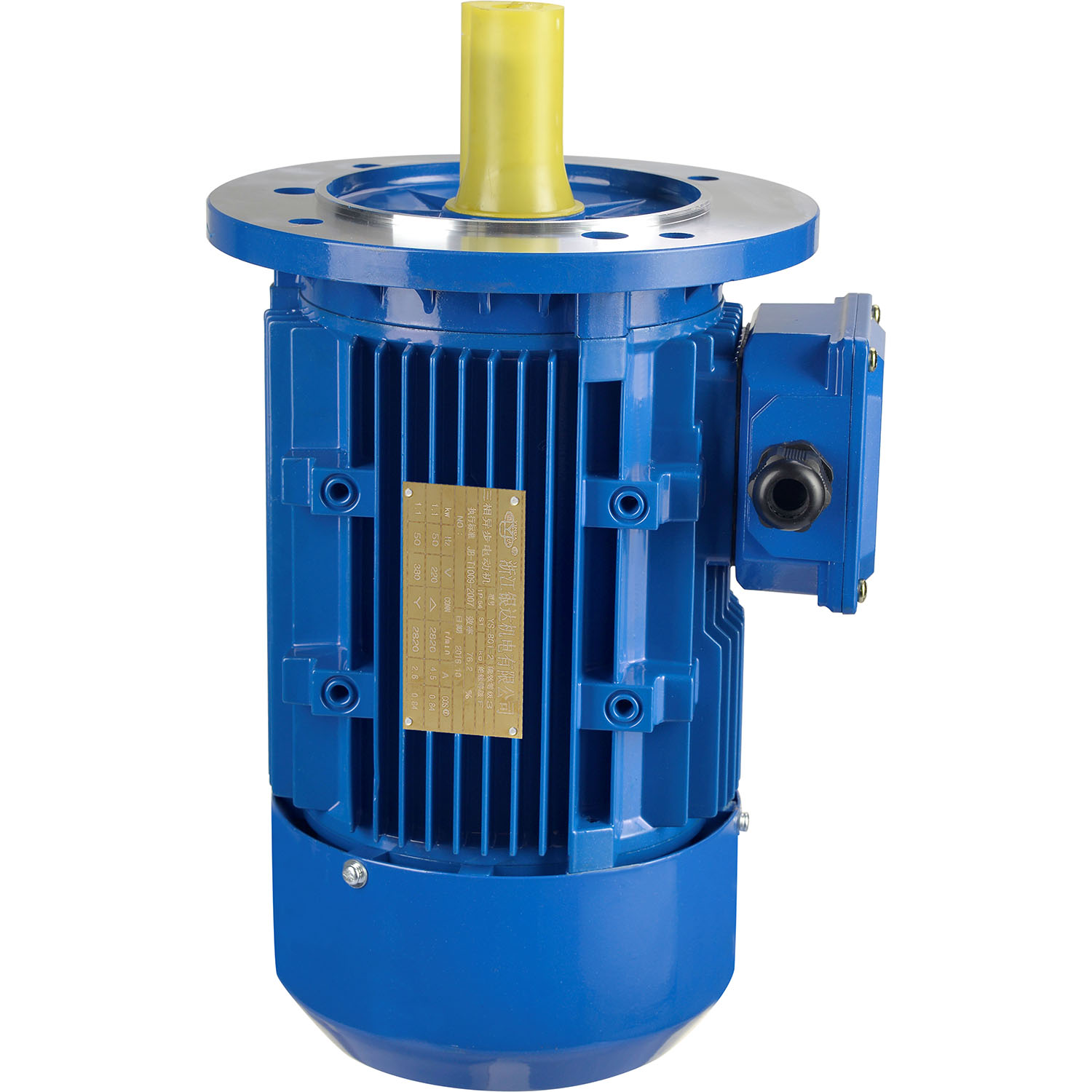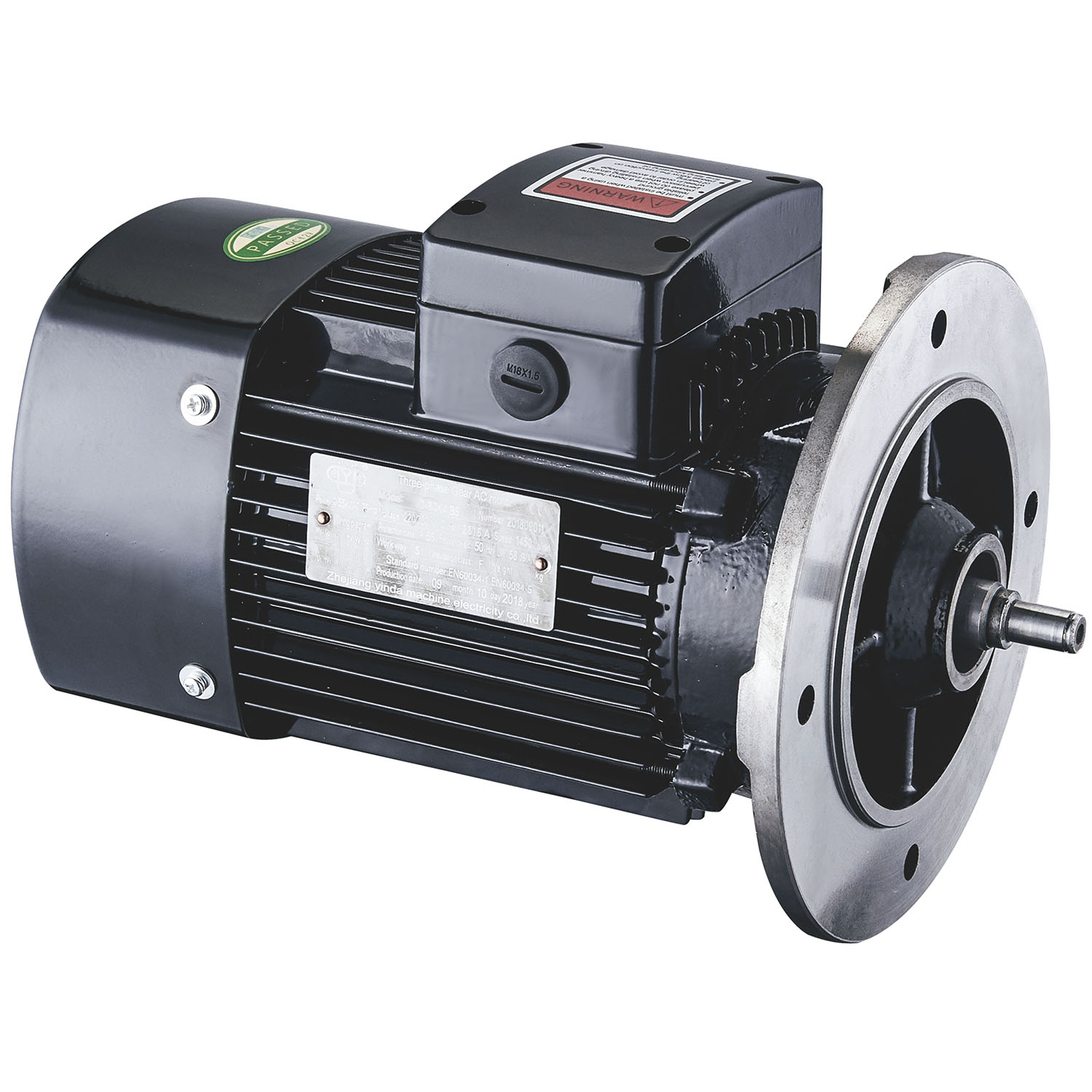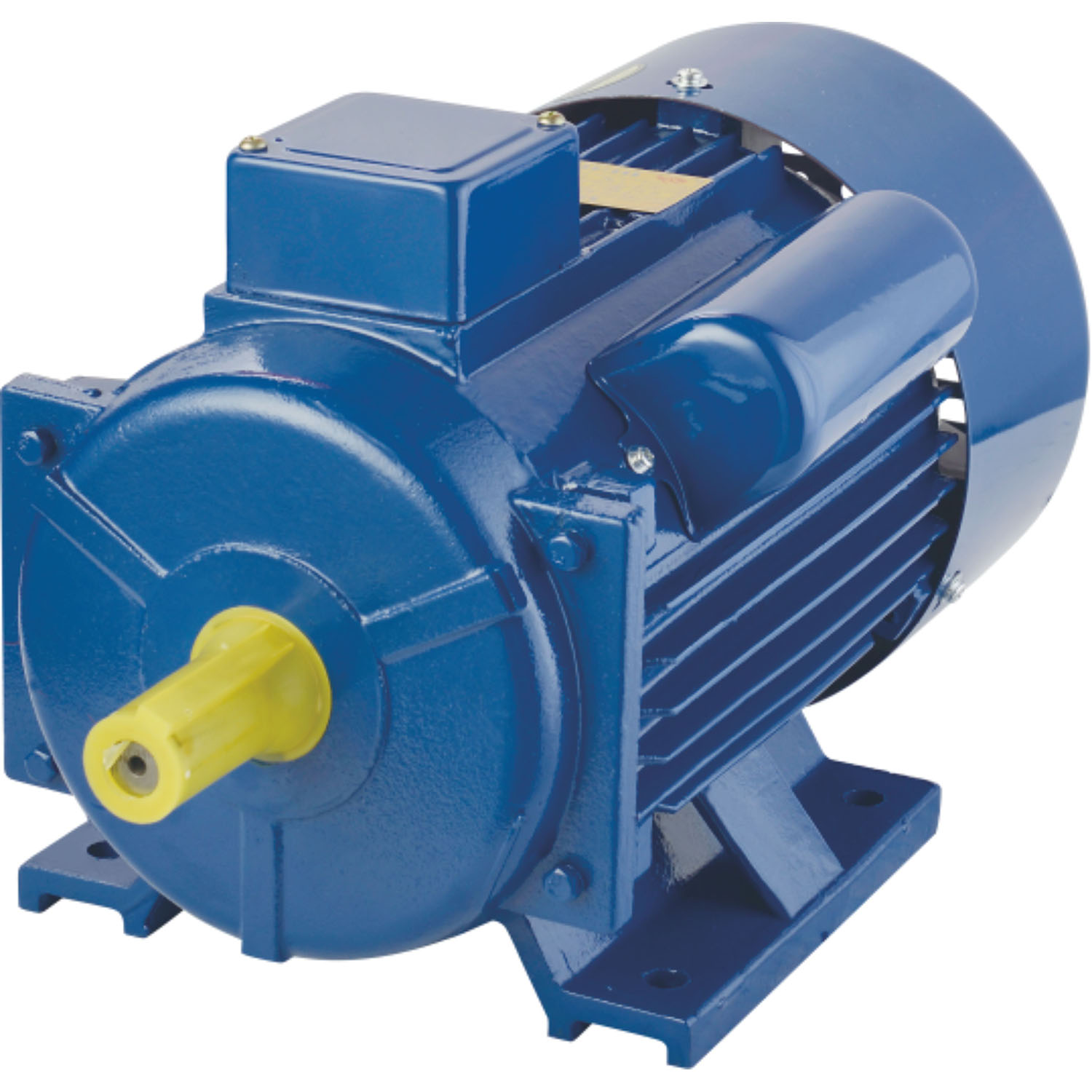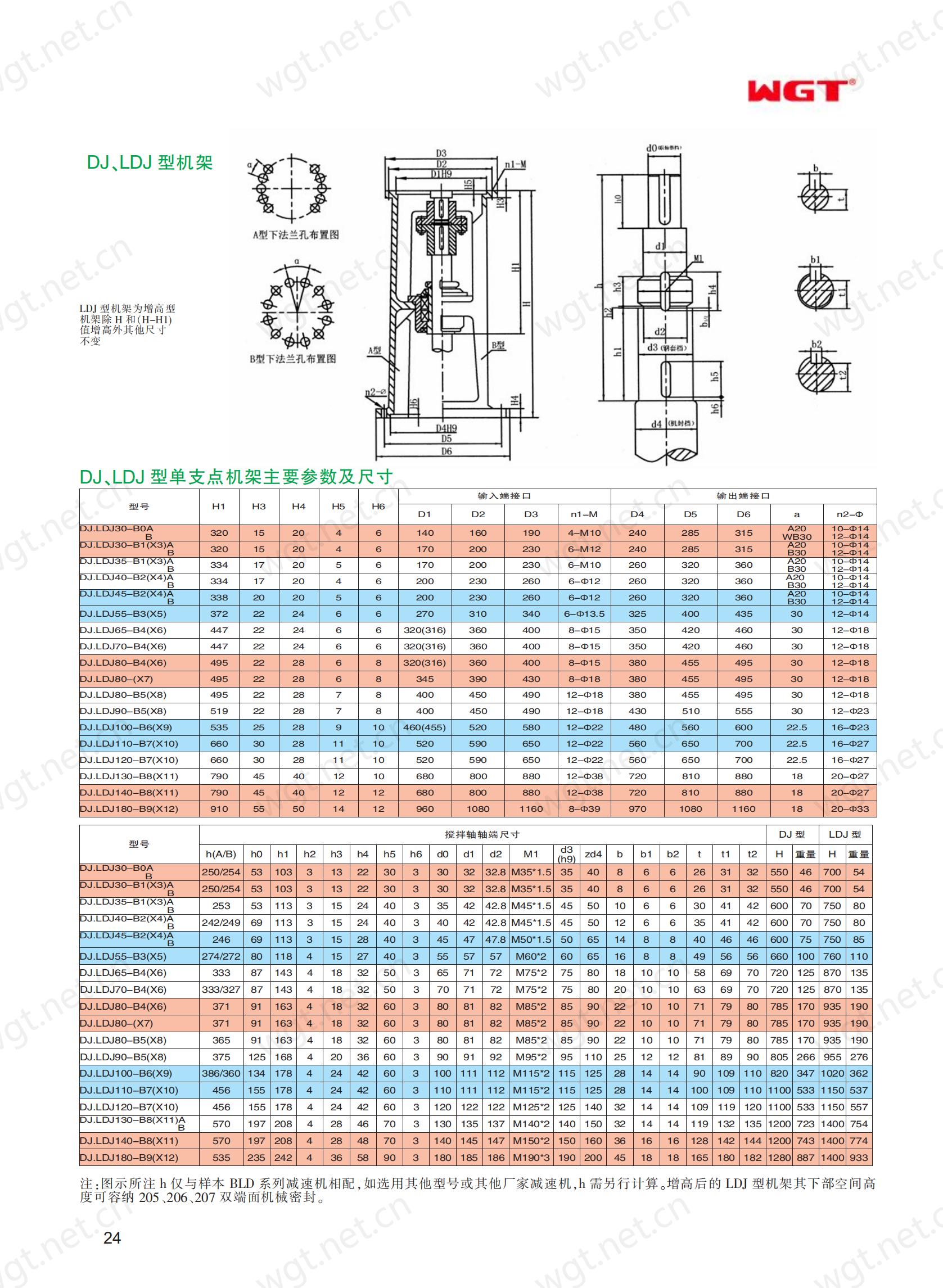Acceptance criteria for gearboxes:
Appearance inspection;
No-load, temperature rise test;
Bearing clearance test;
Measurement test of box vibration;
Shaft vibration displacement measurement test;
Installation and adjustment requirements;
Daily inspection and maintenance of gearbox.
1 Appearance inspection
1. Check by visual inspection, the appearance should be glossy, the paint should be evenly closed, whether the end cover, upper and lower covers and other studs are complete; whether there is a nameplate, and whether the content of the nameplate is clear and correct;
2. No gaskets are allowed to be filled between the subdivided surfaces of the box, but sealant or water glass can be applied to ensure sealing;
3. When assembling, before tightening the bolts of the box body, a 0.05mm feeler gauge should be used to check the tightness between the joint surface of the box cover and the box seat;
4. The seal of the shaft extension should be coated with grease.The sealing devices of the reducer should be installed in strict accordance with the requirements.
2 no-load, temperature rise test
Add enough clean lubricating oil according to the specified amount of oil, and carry out forward and reverse no-load test runs at the rated speed.The trial run time should be more than half an hour, and should meet the following requirements:
1. All couplings and fasteners must not be loose.
2. There must be no oil leakage or oil leakage at the sealing points and joints.
3. The operation of the reducer should be balanced and normal, without shock, vibration and abnormal noise.
4. The oil pump works normally and the oil passage is unimpeded.
After the reducer has passed the no-load test run, it should be carried out with a load test run.The load should be loaded slowly in four stages according to 25%, 50%, 75% and 100% of the rated load of the reducer at the rated speed during the test.The operating time of each stage is subject to the stable temperature rise of the lubricating oil, and the oil temperature should not exceed 100°C after 3 hours of continuous operation. If the gearbox itself has a cooling system, the oil temperature should not exceed 90°C.
3 Bearing clearance test
When adjusting the differential bearing clearance, you can use the tester to measure the axial momentum of the differential, and the clearance allowance can refer to the ministry standard or national standard issued by the Ministry of Communications in recent years.If there is no detection condition and no reference data, the following methods can be used to adjust the bearing clearance:
Tighten the adjusting nuts of the differential bearings in the opposite direction until the differential bearings cannot rotate, or add enough washers at the bottom of the thrust surface of the differential bearings of the semi-floating rear axle case to prevent the differential from pumping. until the bearing rotates.Then use a 0.05-0.08 mm thick gasket to gradually remove the gasket or loosen the nut, so that the differential can rotate freely in its position, and it is better to turn it by hand for 1-2 turns once.However, it must be noted that the bearing clearance after tightening the differential bearing cover or the semi-floating rear axle housing shall prevail.If the bearing clearance is adjusted by adjusting the nut, the bearing clearance will change after the differential bearing cover is tightened, and the bearing cannot rotate. This is the reason why the bearing cover is under the pressure of the bearing cover.
The reasons for the wear of the differential bearing are mainly due to the improper adjustment of the bearing clearance, in addition to the serious lack of lubricating oil, the deformation of the differential housing, and the misalignment of the bearing neck.When the bearing clearance is adjusted too large, the bearing gap will become larger and larger, resulting in accelerated wear of the transmission connecting parts.If the bearing clearance is adjusted too small, the friction resistance of the bearing will be large, and the bearing seat is fully covered with the bearing cover, that is, the bearing cover cannot shrink and deform after the bearing cover bolts are tightened, and the bearing cover cannot move inside the bearing cover.High temperature is generated during transmission. In the case of poor lubrication and heat dissipation, the bearing is ablated. When the lubrication and heat dissipation are acceptable, the surface of the rolling rod will also be damaged (commonly known as bearing damage).
In short, adjusting the differential bearing clearance during warranty is the key to prolonging the service life of the bearing, so be careful when adjusting the bearing clearance and maintain it in time.
4 Measurement test of cabinet vibration
The vibration intensity value at the measuring point can be obtained by measuring the vibration at the bearing seat. Since the measured vibration value is an absolute quantity, the supporting structure of the test is best regarded as a fixed basic structure.During the test, resonance of the supporting structure must be avoided, at least in the speed range of the test.The measured vibration severity is a function of the dynamic coupling between the rotating part of the gear unit and the support case.When using rolling bearings the coupling is very direct, when using sliding bearings the vibration of the shaft is more or less suppressed due to the damping effect of the oil film.Sliding bearings are greatly affected by speed, torque, load and lubricating oil. When evaluating the vibration intensity of bearing housings, the influence of these changing factors must be considered.(Generally caused by unbalance and eccentricity) may not be strongly transmitted to the bearing seat of the gear unit, but under heavy load conditions, the intensity of these vibration transmissions may be high.In addition, high-frequency vibrations due to gear meshing are also strongly transmitted to the bearing housing and dominate the measured vibration signal of the housing.
When measuring the vibration of the box, you can use a speed sensor or an accelerometer. The linear range of the speed sensor depends on its type, generally 10 ~ 2500Hz. When it is lower than the tooth meshing frequency of the high-speed gear device, the measurement range should not be lower. For the 10kHz accelerometer, the instrument needs to be adjusted during use, and special attention should be paid to eliminating the influence of low-frequency noise when converting the signal into a velocity signal. At the same time, attention must be paid to the installation method of the sensor used to ensure the linear measurement range of the instrument. .
5-axis vibration displacement measurement test
It is recommended to use a non-contact sensor to measure the displacement of the shaft.
There are many forms of non-contact vibration sensors, and their measurement working principles are different. The main forms are: capacitive, inductive and eddy current sensors.Since the eddy current sensor has the advantages of wide frequency range, small size and insensitivity to changes in working environment conditions, it is widely used in the measurement of gear devices.
Non-contact sensors are typically used to measure the relative motion between the gear shaft and housing.Place the two probes perpendicular to each other on the specified measurement surface, and the motion track of the gear shaft can be displayed by the oscilloscope.Most flying contact sensors (mainly eddy current sensors) can be used to determine the position of the shaft in the bearing clearance.
Although the frequency response range of the eddy current sensor is very wide (0 ~ 10kHz), when the frequency exceeds 500Hz, generally only a small amount of shaft vibration signals can be measured.Therefore, non-contact sensors are not suitable for vibration evaluation higher than 500Hz.
When the non-contact sensor works in the low frequency range, it can be used to distinguish vibration factors related to shaft unbalance and mechanical error, such as gear radial runout, roundness, etc. It can also distinguish gear force, torque and misalignment force The magnitude of the additional load induced on the shaft, identifying bearing related problems and possible instability.
When installing a non-contact sensor, it should be ensured that there is no large relative movement between the sensor and the bearing or the box. It is best to use a rigid component to insert the sensor into the box, and the sensor can be accessed from the outside, and the sensor can be calibrated without opening the box cover. and maintenance.
The measuring surface shall be concentric with the journal, in accordance with the provisions of the evaluation grade.
6 Requirements for installation and adjustment
1. Installation of rolling bearings.
When the rolling bearing is installed, the inner ring of the bearing should be close to the shaft shoulder, and the gap must not pass through a 0.05mm thick feeler gauge.
2. Bearing axial clearance.
For bearings with non-adjustable clearance (such as deep groove ball bearings), the axial clearance is 0.25~0.4mm; for bearings with adjustable clearance, the axial clearance value.Click to view the axial clearance of tapered roller bearings; the axial clearance of angular contact ball bearings.
3. The tooth side clearance of the gear (worm gear) meshing.
Feeler gauge or lead pressing method can be used.That is, put the lead wire on the alveolar, then turn the gear to flatten the lead wire, and measure the sum of the thickness of the flattened lead wire on the two tooth sides, which is the size of the tooth side.
4. Tooth surface contact spots The cylindrical gear tooth surface contact spots are 2-10-4; the bevel gear tooth surface contact spots are 2-11-4; the worm transmission contact spots are 2-12-4.
7 Daily inspection and maintenance of gearbox
Check whether the oil level, oil temperature and oil pressure are normal every day, check whether there is oil leakage at the output and input ends of the reducer and the joints of the piping system, check whether the temperature at each bearing is normal, and listen to whether the running sound is normal, etc. exclude.
1. Check content every day:
Whether the oil temperature (temperature rise) of the reducer is normal.
Observe whether the oil pump and cooler are turned on, whether the lubricating oil circuit is smooth, and whether the current and pressure of the roller press are normal.
Check whether the sound of the reducer is normal and whether there is any abnormal sound.
2. Weekly inspection content:
Use kerosene or gasoline to clean the filter screen, magnetic rod, and the inner cavity of the filter housing and wipe it clean. The foreign matter cleaned out of the filter needs to be precipitated, preserved and analyzed. When copper scraps appear, it needs to be cleaned every two days and observe the changes of copper scraps. If there is no reduction, it should be shut down and checked out of the box immediately, which is a harbinger of abnormal wear of the bearing cage.
After cleaning the filter of the reducer, the lost lubricating oil should be added. Pay attention to the grade and quality of the added lubricating oil consistent with the used one.
Check whether the bolts are loose, and tighten them immediately if they are loose.
Check the input shaft and output shaft of the reducer for oil leakage, noise and abnormal temperature.
Check whether the connecting bolts between the motor and the reducer are tight every month, and check whether the connecting bolts between the reducer and the installation base are tight every week.
3. Monthly inspection content:
Tighten the bolts connecting the reducer and the torque disc and the bolts of the locking disc, pay attention to the tightening method and tighten according to the specification requirements.
Check whether the heat transfer performance of the cooler is normal, whether the water pressure and flow rate have changed, and whether cleaning measures are required.
Check the time of the last oil change, and make sure to change the oil every 6 months (if deterioration, emulsification, etc. are found, replace it immediately).
4. Annual inspection content:
Shut down for maintenance, remove the dust at the input and output ends of the reducer, clean the vent cap, and repaint the paint on the exterior.
Replace damaged components, and replace vulnerable and consumable parts according to problems that occur during normal use of the equipment.
Recheck whether the bolts of the locking disc are tightened, and retighten them with the rated torque.
Clean the cooler and scale in the pipeline of the circulation system.Note that when disassembling the pipeline, it is necessary to wrap each joint with a clean cloth to prevent dust from entering the reducer.
Every three years, it is necessary to return to the factory and start up for overhaul, replace damaged parts such as bearings and oil seals, and repair or replace individual worn parts.












